Operational Risk is one of the important arms of the risk management triangle, the other two being Credit Risk and Market (Treasury) Risk. Any organisation, particularly in the banking sector, is squarely exposed to operational risks emanating within or outside the organisation.There was no precise definition of operational risk until Basel Accord II came into being in June 2004. For the first time in the history of global banking, operational risk capital charge has been made a mandatory requirement in banking. This certainly puts in a lot of stress and strain on a bank’s management. The entire gamut of operational risk has been visited and covered in the appropriate chapters of this book.
Operational Risk Management Paperback
KSh 1,295.00
Operational Risk is one of the important arms of the risk management triangle, the other two being Credit Risk and Market (Treasury) Risk. Any organisation, particularly in the banking sector, is squarely exposed to operational risks emanating within or outside the organisation.There was no precise definition of operational risk until Basel Accord II came into being in June 2004. For the first time in the history of global banking, operational risk capital charge has been made a mandatory requirement in banking. This certainly puts in a lot of stress and strain on a bank’s management. The entire gamut of operational risk has been visited and covered in the appropriate chapters of this book.
1 in stock
Related products
-
The Electronic Day Trader: Successful Strategies for On-line Trading (PERSONAL FINANCE & INVESTMENT) Paperback
KSh 1,000.00The Electronic Day Trader: Successful Strategies for On-line Trading”, Marc Friedfertig and George West is an international Bestseller! It is the first book to bring high-profit day trading to the individual investor! It is now in paperback! ‘This is the book that started it all’ – Joel Kurtzman, “Fortune”. ‘If you want to take your first few steps into the fiercely competitive (and potentially lucrative) world of stock trading, then you should definitely read this book’ – Roger Segal, TheStreet.com. ‘[Friedfertig and West’s] thorough overview moves at the right pace, with well-chosen examples and solid explanations of how to compete in the cut-throat day trading game’ – “Online Investor”.”BusinessWeek”, “The Wall Street Journal”, “The New York Times”. These national publications recognized the groundbreaking “Electronic Day Trader” for its broad-based market power – not to mention its amazing run on each of their bestseller lists! Now let day trading pioneers Marc Friedfertig and George West, also the authors of the bestselling “Electronic Day Traders’ Secrets”, show you the systems, strategies, and step-by-step instructions to: use today’s high-powered home computers to access professional research, real-time quotes, and low-cost, instant trade executions; bypass your broker and gain direct access to the markets – through SuperDot, ECNs, and other electronic trading systems; and, develop the skills used by market makers to beat them at their own game.
-
Strategic Management in the Media: Theory to Practice
KSh 4,000.00“This book provides vital insights into the elements of strategy and their application to media firms. Solidly grounded in theory but not pedantic, it is essential reading for those who make or wish to comprehend choices of media companies.”
– Robert Picard, University of Jönköping
“Insightful, contextually analytical, yet easy to comprehend, Strategic Management in the Media successfully applies the adaptive and interpretative areas of strategic theory in the media sectors. It provides a unique perspective in which common themes linking media strategy and industry environment are thoughtfully discussed.”
– Sylvia M. Chan-Olmsted, University of Florida“…an invaluable asset for students of media management. The use of pertinent examples and case studies throughout brings the analysis to life and contributes to a highly readable introduction.”
– Gillian Doyle, University of GlasgowThis book is a comprehensive, accessible and expert introduction to strategy within a media management context.
It is divided into two parts – part one providess an introduction to and overview of the media industry from a strategic management perspective, looking in detail at the sectors that together comprise the industry – newspaper, book and magazine publishing, music, radio and television – and the strategic forces at work in each. This provides the foundation for part two, which analyses a number of strategic topics central to the media sector, such as technological change, organisational structure, leadership, and creativity and innovation.
The chapters follow the same structure: the relevant theory is outlined, its application to the media industry is discussed, and case studies from the media industry are used to illustrate the theory and illuminate its relevance for the media field. The cases and examples used come from all sectors of the industry and a range of geographic regions and include News Corporation, Endemol, BBC, Bertelsmann, CNN, MTV, Disney and Pixar.
-
How Brands Become Icons: The Principles of Cultural Branding
KSh 2,795.00Coca-Cola. Harley-Davidson. Nike. Budweiser. Valued by customers more for what they symbolize than for what they do, products like these are more than brands–they are cultural icons. How do managers create brands that resonate so powerfully with consumers? Based on extensive historical analyses of some of America’s most successful iconic brands, including ESPN, Mountain Dew, Volkswagen, Budweiser, and Harley-Davidson, this book presents the first systematic model to explain how brands become icons. Douglas B. Holt shows how iconic brands create “identity myths” that, through powerful symbolism, soothe collective anxieties resulting from acute social change. Holt warns that icons can’t be built through conventional branding strategies, which focus on benefits, brand personalities, and emotional relationships. Instead, he calls for a deeper cultural perspective on traditional marketing themes like targeting, positioning, brand equity, and brand loyalty–and outlines a distinctive set of “cultural branding” principles that will radically alter how companies approach everything from marketing strategy to market research to hiring and training managers. Until now, Holt shows, even the most successful iconic brands have emerged more by intuition and serendipity than by design. With How Brands Become Icons, managers can leverage the principles behind some of the most successful brands of the last half-century to build their own iconic brands. Douglas B. Holt is associate professor of Marketing at Harvard Business School.
-
Sales Essentials: All You Need to Know to Be a Successful Salesperson-From Cold Calling and Prospecting with E-Mail to Increasing the Buy and Closing – Softcover11
KSh 1,195.00Having trouble closing your deals? Hitting a frustrating plateau with your sales numbers? Feel that upselling is a lost cause? Let sales guru Stephan Schiffman drive your sales pitches up a notch with his tried-and-true techniques – and get results immediately! Stephan Schiffman’s Sales Essentials includes time-tested tips on: Mastering the cold call Using email as a selling tool Raising the stakes to “up” your next buy Closing the deal – every time! Plus, you’ll also find 50 surefire questions to ask to make deal after deal, year after year. Packed with insider information you need to beat the competition, you can’t afford not to read Stephan Schiffman’s Sales Essentials!
-
E-Mail Selling Techniques: That Really Work Paperback
KSh 1,195.00The sales culture of the twenty-first century is one where decisions are often made on the fly, calls are not thought out, and communication is based on onscreen ramblings, hitting Òsend,Ó and seeing what happens next. While e-mail has made it easier for salespeople to communicate than ever before, itÕs crucial to your success that your message is clear, concise, and to the point.
Renowned sales guru Stephan Schiffman understands the unique benefits and challenges of using e-mail as a sales tool. E-mail Selling Techniques delivers dependable strategies to help you understand when and how to use e-mail to communicate with a client or prospect.
E-mail Selling Techniques offers essential guidelines for:
- The proper length and format of sales e-mails
- Advice on tone and content
- Tips for writing attention-grabbing subject lines
- Identifying when a phone call might be more appropriate If you rely on computers and portable e-mail devices to do business, Stephan Schiffman will show you how to use technology to your advantage and get the deal done.
-
How the World Sees You: Discover Your Highest Value Through the Science of Fascination
KSh 2,995.00Unlock your unique strengths with How the World Sees You. Learn the science of fascination to maximize your personal brand and highest value.
Sally Hogshead believes the greatest value you can add is to become more of yourself.
Hogshead rose to the top of the advertising profession in her early 20s, writing ads that fascinated millions of consumers. Over the course of her ad career, Sally won hundreds of awards for creativity, copywriting, and branding, and was one of the most awarded advertising copywriters right from start of career, including almost every major international advertising award.
She frequently appears in national media including NBC’s Today Show and the New York Times. Hogshead was recently inducted into the Speaker Hall of Fame, the industry’s highest award for professional excellence. Her advertising work hangs in the Smithsonian Museum of American History.
The science of fascination is based on Hogshead’s decade of research with 250,000 participants, including dozens of Fortune 500 teams, hundreds of small businesses, and over a thousand C-level executives.
-
How to Talk So People Listen: Connecting in Today’s Workplace
KSh 1,500.00At a time when it’s harder than ever to get and keep people’s attention, we could all use some help. Enter Sonya Hamlin, author of the now classic How to Talk So People Listen (1988), and one of the country’s leading communication experts. In this revised and updated edition, Sonya Hamlin, arguably America’s leading communication expert, shows us how to successfully capture people’s attention so that they listen, understand,…
-
Alignment: Using the Balanced Scorecard to Create Corporate Synergies Hardcover
KSh 1,995.00Most organizations consist of multiple business and support units, each populated by highly trained, experienced executives. But often the efforts of individual units are not coordinated, resulting in conflicts, lost opportunities, and diminished performance.
Robert S. Kaplan and David P. Norton argue that the responsibility for this critical alignment lies with corporate headquarters. In this book, the authors apply their revolutionary Balanced Scorecard management system to corporate-level strategy, revealing how highly successful enterprises achieve powerful synergies by explicitly defining corporate headquarters’ role in setting, coordinating, and overseeing organizational strategy.
Based on extensive field research in organizations worldwide, Alignment shows how companies can build an enterprise-level Strategy Map and Balanced Scorecard that clearly articulate the “enterprise value proposition”: how the enterprise creates value above that achieved by individual business units operating alone. The book provides case studies, actionable frameworks, and sample scorecards that show how to align business and support units, boards of directors, and external partners with the corporate strategy and create a governance process that will ensure that alignment is sustained.
The next breakthrough in strategy execution from the field’s premier thinkers, Alignment shows how today’s companies can unlock unrealized value from enterprise synergies.

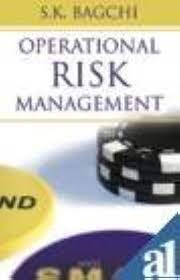
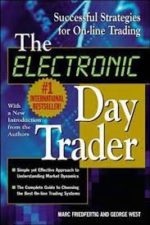

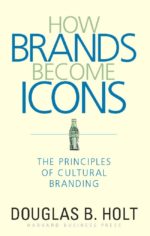
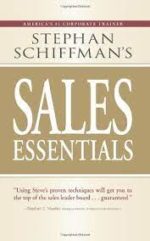
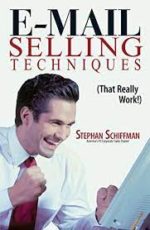
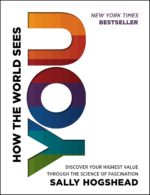


Be the first to review “Operational Risk Management Paperback”